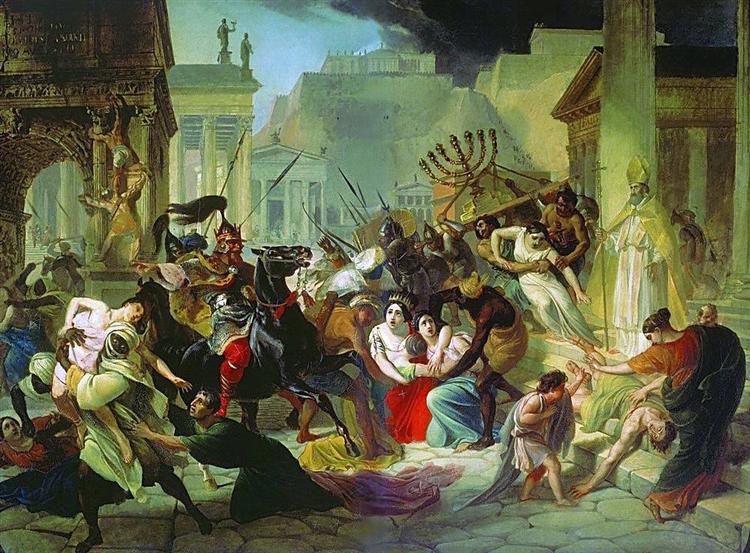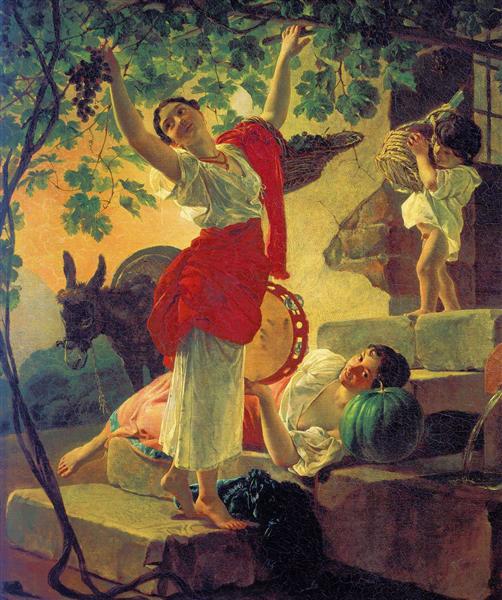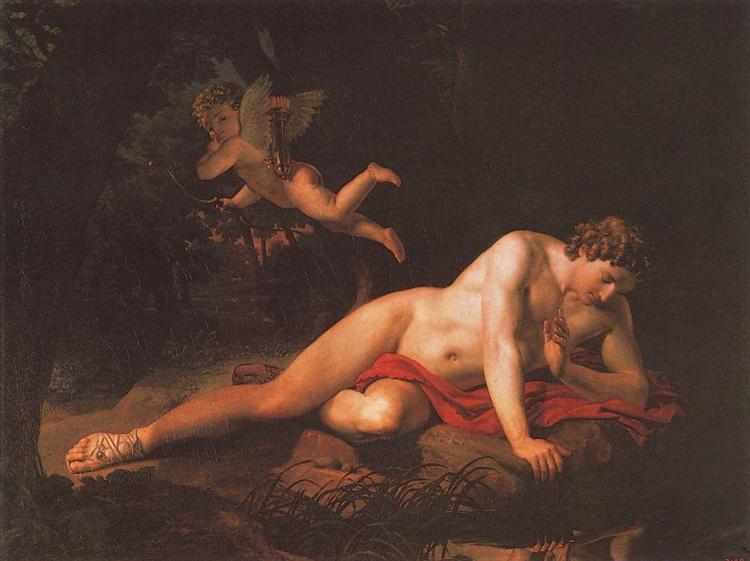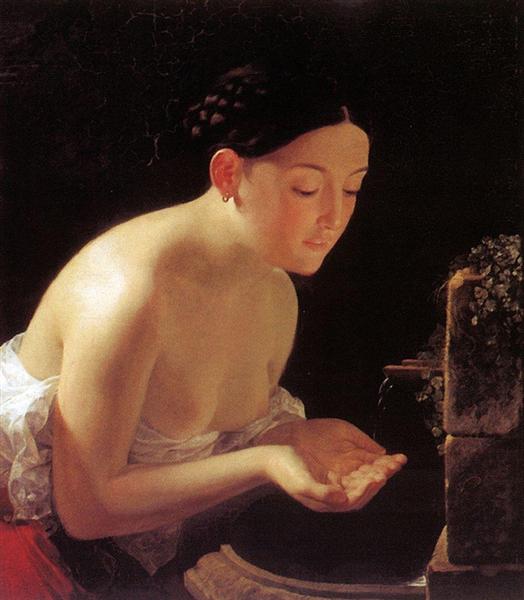
In December 1834, the architect Alexei Gornostaev wrote to Alexander Bryullov about Karl: “He told me his gigantic idea – to represent in the picture the time when the barbarians are plundering Rome.” This idea was embodied in the sketch “Invasion of Genzerich in Rome”. In 1835 the collection “Arabesques. Various works of N. Gogol “. It contains the articles “The Last Day of Pompeii” and “On the Movement of Nations at the End of the 5th Century”. The latter sets out the brightest moments of the barbarian invasions, including the talk about the Vandals, their leader Henzerich, who “had an extraordinary skill to rob: after him no one could profit from anything.” It is very difficult to believe that Bryullov did not look into this article by Gogol, but limited himself only to reading Gogol’s praises to his painting. The “gigantic thought” that had come to him back in Rome was suddenly supported here. Vandals with their Hänzerich are also a terrible element, but this is the storm of history: the collision of worlds, the Roman – sophisticated, but decrepit – and the wild, primitive, barbaric. The death of the ancient world here does not come from a natural element, but from a volcano called history. From a speculative point of view, it was an excellent plot, typically romantic, and the classics would be here in their historical being, and not as a timeless ideal model.
The Germanic tribe of the Vandals conquered North Africa from Rome, where Henzerich founded his state, which pirated in the Mediterranean. With fire and sword he baptized into Christianity, and this Christian barbarian – vandal became a household name. In 455, vandals invaded Rome and robbed it to the bone, grabbing not only gold, but also for some reason artistic treasures, captured and taken away artists and artists, as well as Empress Eudoxia and her daughters. It was she who secretly invited Hanzerich to Rome, so that, using his power in “showdowns” and intrigues to seize imperial power, to avenge the murder of her husband, the emperor. The arrogant Romans fought among themselves with the hands of barbarian troops.
Hanzerich himself is shown not so much as a Roman general, but as something like a medieval knight. His warriors are Africans, similar to Arab Bedouins. They rob literally – two figures are outlined who climb the arch, pluck something from there, carry out the seven-branched candelabra and, like the same prey, catch women.
In many ways, this sketch is a replica of Pompeii. There are a number of direct repetitions: the group of the empress in a scalloped crown with two daughters in the center is similar to the same group on the right side of Pompeii, a young man whose “Algerian Bedouin” drags off a woman, in a slightly modified form repeats the group depicting Pliny persuading his old mother escape from Pompeii. True, this sketch has a dramatic center: Genzerich on horseback before kneeling Eudoxia. Aside from the general hustle and bustle, it can be noted that Bryullov managed in this dialogue to express a detail of the intrigue with the use of Hänzerich in a political game, not devoid of psychological and historical accuracy: the barbarian is not attracted by the power of the Roman emperor and the burden of state concerns associated with it – only robbery as a way of existence … In the reviews of contemporaries who saw the sketch, it is simply called “Barbarians rob Rome”. The figure of the bishop in the background is also eloquent in his immobile passivity, he is only a witness to the death and devastation of Rim, to whom the “scourge of God” is directed (this is what the Christians called another barbarian leader – Attila). At the level of design, historical drama, the plot of this sketch is quite comparable with the idea of Delacroix’s painting “The capture of Constantinople by the crusaders.”
Year of painting: 1836.
Dimensions of the painting: 88 x 117.9 cm.
Material: canvas.
Writing technique: oil.
Genre: historical painting.
Style: romanticism.
Gallery: State Tretyakov Gallery, Moscow, Russia.


